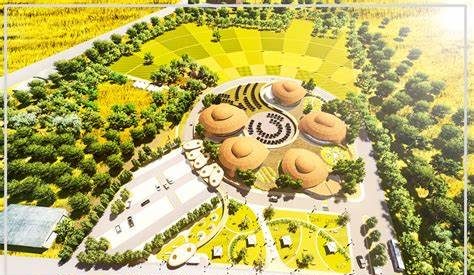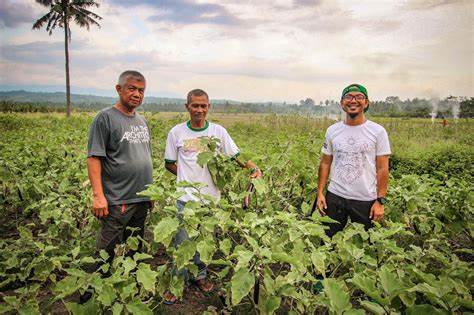
Vertical Farming: Empowering Communities Through Agriculture
Introduction
Vertical farming is an innovative approach to agriculture that involves growing plants in vertically stacked layers, typically in controlled environments such as skyscrapers or shipping containers. This method of farming offers numerous benefits, including increased food production, reduced environmental impact, and the creation of job opportunities. In this article, we will explore the historical background, key concepts, and definitions, as well as the main discussion points surrounding vertical farming and its relevance in empowering communities through agriculture.
Historical Background
The concept of vertical farming can be traced back to the Hanging Gardens of Babylon, one of the Seven Wonders of the Ancient World. However, it was not until the 20th century that the idea gained traction and significant advancements were made. Key milestones in the field include the invention of hydroponics, a technique of growing plants without soil, and the development of aeroponics, which involves cultivating plants in a mist environment. These breakthroughs paved the way for vertical farming as we know it today.
Key Concepts and Definitions
Vertical farming can be defined as the practice of growing crops in vertically stacked layers using advanced technologies and sustainable agriculture practices. It often involves the use of hydroponics, a system that delivers nutrients directly to the roots of plants, as well as aeroponics, which relies on a mist environment. Another important term to understand is aquaponics, a symbiotic system that combines aquaculture (fish farming) with hydroponics, creating a self-sustaining ecosystem. These concepts and practices are essential in maximizing the productivity and efficiency of vertical farming.

Main Discussion Points
Benefits of Vertical Farming for Communities
One of the main advantages of vertical farming is the increased food production and accessibility it offers. By utilizing vertical space, farmers can produce higher yields compared to traditional farming methods. This is particularly crucial in addressing food security issues, especially in urban areas where arable land is limited. Additionally, vertical farming has a significantly lower carbon footprint and environmental impact compared to conventional agriculture, as it reduces the need for transportation and synthetic inputs. Lastly, vertical farming creates job opportunities and contributes to economic growth by promoting local food production and reducing dependency on imports.
Social and Community Empowerment through Vertical Farming
Vertical farming has the potential to empower communities in numerous ways. Firstly, it ensures food security and self-sufficiency by providing a reliable source of fresh produce year-round. This is especially important for communities in food deserts or areas with limited access to nutritious food. Secondly, vertical farming promotes education and skill development by engaging community members in the cultivation process. This hands-on experience can teach valuable agricultural skills and inspire a new generation of farmers. Lastly, vertical farming improves nutrition and public health by making fresh and healthy produce more readily available to communities, ultimately reducing the prevalence of diet-related diseases.
Vertical Farming as a Solution for Urbanization and Limited Land Availability
Urbanization and limited land availability pose significant challenges to traditional agriculture. Vertical farming offers a sustainable solution by utilizing vacant urban spaces and buildings. By converting underutilized sites into vertical farms, communities can maximize their land resources and increase local food production. This not only reduces the reliance on importing food from distant regions but also minimizes the environmental impact associated with long-distance transportation. Vertical farming also provides an opportunity for urban dwellers to reconnect with nature and engage in a more sustainable lifestyle.
Case Studies or Examples
Two notable case studies of successful vertical farming initiatives are The Plant Chicago and The Sky Greens vertical farm in Singapore. The Plant Chicago is a vertical farm and food business incubator that focuses on creating a circular economy within the local community. It utilizes waste from nearby businesses to generate energy and nutrients for its vertical farm. The Sky Greens vertical farm in Singapore, a densely populated city-state with limited land, demonstrates how vertical farming can be integrated into urban environments. It uses a patented A-Go-Gro system, where plants rotate around a vertical tower to ensure even sunlight exposure.

Current Trends or Developments
Advancements in technology and automation have revolutionized vertical farming. The use of robotics and artificial intelligence has increased efficiency and productivity, reducing the need for manual labor. Furthermore, the integration of renewable energy sources, such as solar panels and wind turbines, in vertical farming systems has made them more sustainable and energy-efficient. Collaborative efforts between communities, businesses, and governments have also played a crucial role in promoting vertical farming initiatives. By working together, stakeholders can overcome challenges, share knowledge, and create a more sustainable and resilient food system.
Challenges or Controversies
Despite its numerous benefits, vertical farming still faces several challenges and controversies. Cost and scalability are major concerns, as the initial investment and operating costs of vertical farms can be high. Additionally, scaling up vertical farming operations to meet the demands of larger populations is a complex task. Energy consumption and environmental sustainability are also subjects of debate. Critics argue that the energy required to power indoor vertical farms may outweigh the environmental benefits, especially if the electricity is generated from non-renewable sources. Lastly, there is ongoing debate over the nutritional value and taste of vertically farmed produce compared to traditionally grown crops. Further research is needed to address these concerns and provide evidence-based solutions.
Future Outlook
The potential for vertical farming to revolutionize global food production is immense. As populations continue to grow, vertical farming offers a sustainable and efficient solution to meet the increasing demand for food. Its integration with smart city initiatives and sustainable urban development can transform cities into self-sufficient and resilient ecosystems. Continued research and innovation in vertical farming techniques and practices will further improve its efficiency, scalability, and environmental impact. By harnessing the power of vertical farming, communities can empower themselves through agriculture and create a more sustainable future.

Conclusion
Vertical farming has the potential to empower communities by providing increased food production, promoting education and skill development, and improving public health. It offers a sustainable solution to the challenges of urbanization and limited land availability, while also reducing the environmental impact of agriculture. Despite the challenges and controversies, vertical farming holds great promise in revolutionizing global food production and creating resilient and self-sufficient communities.
References
Gunders, David. (2012). Wasted: How America Is Losing Up to 40 Percent of Its Food from Farm to Fork to Landfill. National Resources Defense Council.
Despommier, Dickson. (2010). The Vertical Farm: Feeding the World in the 21st Century. St. Martin’s Griffin.
“The Plant: Urban Farm and Food Business Incubator.” www.plantchicago.org
“Sky Greens: Vertical Farming in Singapore.” www.skygreens.com




